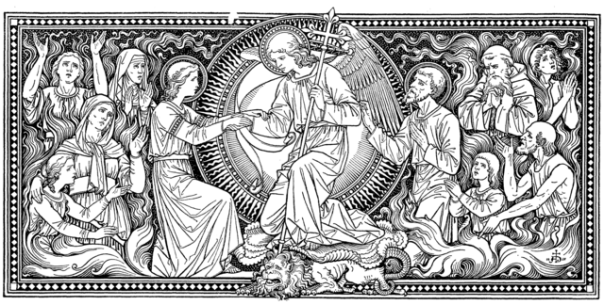
unless stated otherwise.
Unless stated otherwise, photos from Gloucester Cathedral Web-Site at http://www.gloucestercathedral.org.uk
(Unless otherwise accredited, Photos of Gloucester Cathedral are taken by Angelo Hornak, Richard Cann, Chris Smith, Esther Platten, Gloucester Cathedral and Gilmere Ltd).

THE DISSOLUTION AND A NEW FOUNDATION.
Henry VIII ordered the Monasteries to be Dissolved, and Gloucester Abbey surrendered in January 1540. The Abbey buildings became Gloucester Cathedral, The Seat of The Bishop of Gloucester, in 1541. No longer a Community of Monks, it was to be led by a Dean and a Chapter of Canons.
TURBULENT CENTURIES.
The ideological and doctrinal struggles, of the 16th- and 17th-Centuries, made their mark in Gloucester: Bishop Hooper was burned at the stake here in 1555 on the orders of the Catholic Queen Mary; in the 1620s, Bishop Miles Smith and his Dean, William Laud, held profoundly different views on what the nature and style of Church of England should be.

Then, under Oliver Cromwell, there was a move to demolish the Cathedral building, altogether, (it was saved by the intervention of The Mayor and Burgesses of The City of Gloucester).
CALMER TIMES.
With the restoration of the monarchy (after the Civil Wars and Commonwealth period) in 1660, the Dean and Chapter resumed the running of the Cathedral and that is how it is managed today.
Throughout the 18th-, 19th- and 20th-Centuries, they have carried out repairs and conservation work, rather than rebuilding or remodelling the building.
More importantly, Gloucester Cathedral has endured through the centuries as a place of Christian witness, where God is worshipped and the gospel of Jesus Christ is proclaimed every day.

PART FIVE FOLLOWS.
(Unless otherwise accredited, Photos of Gloucester Cathedral are taken by Angelo Hornak, Richard Cann, Chris Smith, Esther Platten, Gloucester Cathedral and Gilmere Ltd).
Gloucester Cathedral.
Photo: August 2019.
Source: Own work.
Author: photo by user:geni
(Wikimedia Commons)

Henry VIII ordered the Monasteries to be Dissolved, and Gloucester Abbey surrendered in January 1540. The Abbey buildings became Gloucester Cathedral, The Seat of The Bishop of Gloucester, in 1541. No longer a Community of Monks, it was to be led by a Dean and a Chapter of Canons.
TURBULENT CENTURIES.
The ideological and doctrinal struggles, of the 16th- and 17th-Centuries, made their mark in Gloucester: Bishop Hooper was burned at the stake here in 1555 on the orders of the Catholic Queen Mary; in the 1620s, Bishop Miles Smith and his Dean, William Laud, held profoundly different views on what the nature and style of Church of England should be.
Gloucester Cathedral (Bishop Hooper's Monument).

Then, under Oliver Cromwell, there was a move to demolish the Cathedral building, altogether, (it was saved by the intervention of The Mayor and Burgesses of The City of Gloucester).
CALMER TIMES.
With the restoration of the monarchy (after the Civil Wars and Commonwealth period) in 1660, the Dean and Chapter resumed the running of the Cathedral and that is how it is managed today.
Throughout the 18th-, 19th- and 20th-Centuries, they have carried out repairs and conservation work, rather than rebuilding or remodelling the building.
More importantly, Gloucester Cathedral has endured through the centuries as a place of Christian witness, where God is worshipped and the gospel of Jesus Christ is proclaimed every day.
Gloucester Cathedral's Fan Vaulting.
From Wikimedia Commons.
Photo taken by Jongleur100, September 2009.

PART FIVE FOLLOWS.

































